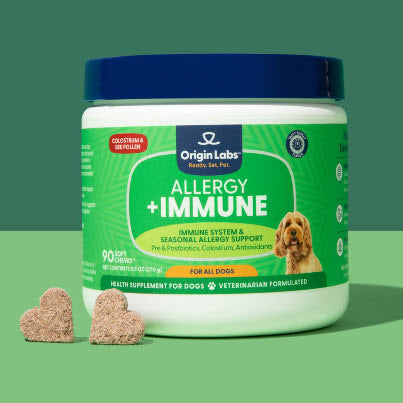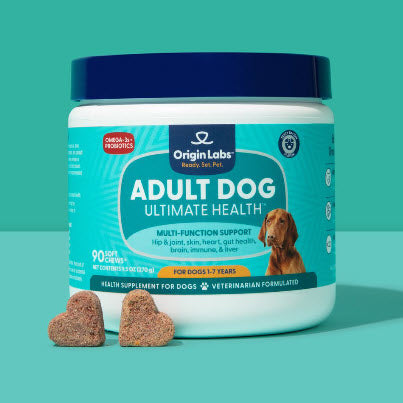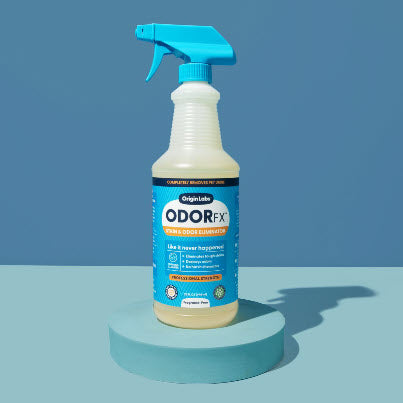Introduction
Muscle atrophy in dogs is the loss of muscle tissue, resulting in a decrease in muscle mass and strength. This can happen due to various reasons like getting older, being sick, not being physically active enough, having joint pain, or lacking essential nutrients. Dogs with this condition may have trouble moving around, feel weak, and see a noticeable decline in their overall quality of life.
It's crucial to detect muscle atrophy early. Spotting the signs sooner rather than later allows for prompt action, which is key to effectively managing the condition. The right treatment can include things like medication, physical therapy, proper nutrition, and making lifestyle changes. By catching muscle atrophy in its initial phases and taking immediate steps, dog owners can greatly increase their pet's chances of getting better and help them stay mobile and happy.
Knowing what causes muscle atrophy in dogs, understanding its symptoms, and being aware of the available treatments all empower pet owners to take better care of their furry friends. By diving into each aspect of this condition, we can gain valuable knowledge on how to support dogs dealing with muscle atrophy and improve their overall well-being.
Understanding Muscle Atrophy in Dogs
Definition of Muscle Atrophy in Dogs
Muscle atrophy in dogs is a condition where there is a noticeable decrease in muscle mass. This can occur due to various reasons such as aging, illness, or reduced physical activity. The muscles become weaker and may lose their normal function.
How Does Muscle Atrophy Affect Dogs?
Muscle atrophy can significantly impact a dog's quality of life. It often leads to:
- Decreased mobility: Dogs may struggle with walking, climbing stairs, or even standing up.
- Pain and discomfort: Weak muscles can cause pain, especially when associated with underlying conditions like arthritis.
- Reduced stamina: Affected dogs tire more quickly and may show less interest in activities they once enjoyed.
Causes of Muscle Atrophy in Dogs
1. Aging Process
Age can play a significant role in muscle atrophy for dogs. As dogs grow older, they naturally experience a decline in muscle mass and strength. This process is similar to what humans go through as they age. Here are some ways age contributes to muscle atrophy in dogs:
- Reduced Physical Activity: Older dogs tend to be less active, which can lead to decreased muscle use and subsequent muscle atrophy.
- Decreased Protein Synthesis: The ability to build and repair muscle diminishes with age, making it harder for older dogs to maintain their muscle mass.
- Metabolic Changes: Aging can alter a dog's metabolism, affecting how nutrients are absorbed and utilized, which can contribute to muscle wasting.
2. Illnesses and Infections
Underlying health conditions can have a profound impact on canine muscles. Certain diseases and infections may directly or indirectly cause muscle atrophy:
- Chronic Diseases: Conditions such as diabetes, cancer, and kidney disease can lead to muscle wasting.
- Neurological Disorders: Diseases that affect the nervous system, like degenerative myelopathy or peripheral nerve disorders, can result in diminished muscle use and subsequent atrophy.
- Inflammatory Diseases: Autoimmune diseases that cause chronic inflammation can also contribute to muscle loss.
3. Reduced Physical Activity and Immobility
Lack of exercise is a common cause of muscle atrophy in dogs. Whether due to injury, illness, or lifestyle factors, reduced physical activity can quickly lead to muscle deterioration:
- Post-Surgical Recovery: Dogs recovering from surgery often experience limited mobility, leading to temporary muscle wasting.
- Injury or Trauma: Injuries that restrict movement can cause significant muscle loss if not managed properly.
- Sedentary Lifestyle: Dogs that do not get regular exercise are at higher risk of developing muscle atrophy over time.
4. Joint Pain and Arthritis
Joint issues significantly impact muscular health in dogs:
- Arthritis: Chronic joint pain from arthritis discourages movement, leading to reduced muscle use and eventual atrophy.
- Hip Dysplasia: This condition causes joint instability and pain, resulting in decreased activity levels and muscle loss around the affected joints.
- Other Joint Problems: Issues like ligament injuries or dislocations also contribute to reduced mobility and subsequent muscle wasting.
5. Nutritional Deficiencies
Proper nutrition plays a crucial role in maintaining healthy muscles. Nutritional deficiencies can accelerate the process of muscle atrophy:
- Protein Deficiency: Adequate protein intake is essential for muscle maintenance and repair. A diet lacking sufficient protein can lead to rapid muscle loss.
- Vitamin E Deficiency: This antioxidant is vital for protecting muscles from oxidative stress; its deficiency can result in weakened muscles.
- Mineral Imbalances: Imbalances in minerals like calcium and phosphorus can impair muscular function and structure.
Understanding these causes helps pet owners take proactive steps towards maintaining their dog's muscular health through proper care, nutrition, and regular veterinary check-ups.
Symptoms, Diagnosis, and Treatment of Muscle Atrophy in Dogs
Signs to Watch Out For
Recognizing the symptoms of muscle atrophy in dogs early can be crucial for effective treatment. Here are some common signs:
- Visible Muscle Loss: Noticeable thinning or wasting away of muscles, particularly around the hips, shoulders, and thighs.
- Weakness: Difficulty standing up, climbing stairs, or walking.
- Limping or Favoring a Limb: Dogs may avoid putting weight on affected legs.
- Pain and Discomfort: Whining, yelping, or showing sensitivity when touched in specific areas.
- Lethargy: Reduced energy levels and reluctance to engage in physical activities.
- Weight Loss: Unintended weight loss not associated with dietary changes.
- Behavioral Changes: Increased irritability or changes in usual behavior patterns.
Diagnosing the Condition
Diagnosing muscle atrophy in dogs involves several methods to ensure an accurate understanding of the underlying causes. Veterinarians typically employ:
- Physical Examination: Initial assessment to check for visible signs of muscle loss and evaluate the dog's overall condition.
- Medical History Review: Understanding any previous illnesses, injuries, or changes in activity levels that could contribute to muscle wasting.
- Blood Tests: Assessing for underlying health conditions such as infections, nutritional deficiencies, or metabolic disorders.
- Imaging Studies: X-rays: To evaluate bone structure and detect joint issues like arthritis that could lead to muscle atrophy. MRI/CT Scans: For a detailed view of soft tissues and muscles.
- Muscle Biopsy: In some cases, a sample of muscle tissue may be taken for laboratory analysis to identify specific muscular diseases.
Comprehensive Treatment Approaches
Managing canine muscle atrophy effectively requires a multi-faceted approach. Here are key strategies:
1. Medication and Veterinary Interventions
Medications can play a significant role in managing symptoms and underlying conditions contributing to muscle atrophy.
- Anti-inflammatory Drugs: Help reduce pain and inflammation associated with joint issues like arthritis.
- Steroids: May be used to reduce severe inflammation but should be administered under strict veterinary supervision due to potential side effects.
- Disease-Specific Treatments: Addressing underlying conditions such as infections or metabolic disorders through appropriate medications.
2. Rehabilitation and Physical Therapy
Canine physical therapy is essential for promoting muscle recovery and maintaining mobility.
- Hydrotherapy: Water-based exercises that provide resistance while minimizing strain on joints.
"Hydrotherapy has shown excellent results in improving muscle strength without putting undue stress on joints," explains Dr. Emily White, a canine physiotherapist.
- Massage Therapy: Helps improve blood circulation to affected muscles and reduces stiffness.
- Laser Therapy: Utilizes light energy to stimulate cell regeneration and reduce inflammation.
3. Nutritional Support for Maintaining Muscle Health
Proper nutrition is vital for supporting muscle function and preventing further wasting.
- High-quality Protein Diets: Essential amino acids support muscle repair and growth. Consult your vet for recommendations on suitable diets.
"A diet rich in high-quality protein can significantly aid in muscle recovery," suggests Dr. Sarah Green, a veterinary nutritionist.
- Supplements:
- Omega Fatty Acids: Help reduce inflammation and support overall muscular health.
- Glucosamine & Chondroitin: Promote joint health and mobility.
Managing Swelling and Inflammation in Dogs with Muscle Atrophy
Addressing swelling and inflammation is a vital aspect of managing muscle atrophy in dogs. These conditions often accompany muscle wasting, exacerbating discomfort and hindering recovery. Incorporating specific lifestyle measures can significantly aid in alleviating these symptoms.
Lifestyle Measures for Reducing Swelling and Inflammation:
- Cold Therapy: Applying cold packs to affected areas can reduce inflammation and numb pain. It's essential to wrap the ice pack in a cloth to avoid direct contact with the skin, limiting application to 15-minute intervals.
- Massage Therapy: Gentle massage stimulates blood flow, which can help reduce swelling and promote muscle relaxation. Focus on slow, circular motions around the affected muscles.
- Hydrotherapy: Swimming or walking in water provides low-impact exercise that strengthens muscles without putting stress on joints. The buoyancy of water supports the dog's weight, reducing inflammation and promoting mobility.
Strengthening Exercises
Regular physical activity tailored to your dog's capabilities is crucial for maintaining muscle mass and preventing further atrophy. Consulting a veterinarian or a canine physical therapist is recommended to develop an appropriate exercise regimen.
Effective Strengthening Exercises:
- Passive Range of Motion (PROM) Exercises: These exercises involve moving the dog's limbs gently through their natural range of motion without active participation. PROM helps maintain joint flexibility and muscle length.
- Controlled Walking: Short, frequent walks on soft surfaces like grass or carpet can help strengthen weakened muscles. Gradually increasing the distance can improve endurance over time.
- Balance and Stability Exercises: Using balance boards or stability balls encourages dogs to engage their core muscles, enhancing overall strength and coordination.
Dietary Adjustments
A well-balanced diet rich in anti-inflammatory ingredients can support muscle health. Omega-3 fatty acids, found in fish oil supplements, are particularly effective in reducing inflammation.
Key Nutritional Components:
- Omega-3 Fatty Acids: Essential for reducing inflammation and promoting overall muscle health. These can be found in foods such as sardines and salmon.
- Protein-Rich Foods: High-quality proteins support muscle repair and growth. Include lean meats like chicken or turkey in your dog's diet.
- Antioxidant-Rich Vegetables: Ingredients such as spinach, blueberries, and carrots combat oxidative stress, protecting muscle cells from damage.
Implementing these lifestyle measures can significantly improve your dog's comfort and quality of life while managing muscle atrophy. Adapting daily routines to include these practices fosters a supportive environment for your pet's recovery journey.
By focusing on practical steps that address both immediate discomforts like swelling and long-term goals such as muscle strengthening, you provide your dog with comprehensive care tailored to their specific needs.
Quality Supplements for Supporting Muscle Health in Dogs
Dogs with weak muscles can benefit greatly from high-quality supplements that contain important nutrients specifically formulated to support muscle health. Here are some key nutrients vital for maintaining and promoting canine muscle health:
1. Protein
Proteins are the building blocks of muscles and play a critical role in muscle repair and growth. Look for dog supplements that use high-quality protein sources such as chicken, fish, and eggs.
2. Amino Acids
Essential amino acids like leucine, isoleucine, and valine (branched-chain amino acids) are crucial for muscle protein synthesis. Many animal-based proteins contain these amino acids.
3. Omega-3 Fatty Acids
Omega-3 fatty acids are known for their anti-inflammatory properties, which can help reduce muscle inflammation and promote recovery. Fish oil and flaxseed oil are good sources of omega-3 fatty acids.
4. L-Carnitine
L-Carnitine is a nutrient that helps the body convert fats into energy, which is essential for maintaining healthy muscle function. Supplements containing L-carnitine can support overall muscular endurance.
5. Vitamin E
Vitamin E is an antioxidant that helps protect cell membranes from oxidative damage. It is important for maintaining healthy muscles and can be found in various dog supplements designed to enhance muscle health.
6. Glucosamine and Chondroitin
While commonly included in joint supplements, glucosamine and chondroitin also support overall muscular health by improving joint function and reducing pain associated with arthritis or joint issues.
7. Creatine
Creatine is known to enhance strength and increase lean muscle mass, making it beneficial for dogs who need extra muscular support.
Choosing the Right Supplement
When it comes to selecting the right supplement for your dog's muscle health, there are several factors to consider:
- Ingredient Quality: Look for supplements that use natural ingredients and avoid artificial additives or fillers. It's also important to ensure that the supplement contains high-quality sources of protein and essential nutrients.
- Formulation Specifics: Opt for supplements that specifically target muscle support and consider whether your dog may also benefit from additional ingredients like antioxidants for overall health.
- Bioavailability: Choose supplements with ingredients known for their high bioavailability, meaning they can be easily absorbed and utilized by the dog's body. For example, L-carnitine should be present in forms easily utilized by the dog's body.
- Veterinary Recommendations: Always consult your veterinarian before starting any new supplement regimen for your dog. They can provide valuable insight based on your dog's specific needs and health conditions.
Incorporating these key nutrients through quality supplements can provide substantial support to dogs dealing with muscle atrophy, aiding in their recovery and overall well-being. Taking the time to choose the right product tailored to your dog's needs ensures they receive the prime nutrition necessary for maintaining healthy muscles.
Recommended Supplement: Origin Labs
Try the supplements from Origin Labs to support the overall wellness of your dog.
Key Offerings from Origin Labs:
- Adult Dog Supplements : Help your dog live their best life with this multi-function support supplement
- Ultimate Health: Products that support the general health of dogs at different life stages.
Conclusion
Early detection and appropriate treatment are crucial in managing muscle atrophy in dogs. By recognizing the symptoms of muscle weakness and tissue wasting, you can take timely action to significantly improve your dog's quality of life.
Key Points:
- Early Detection: Monitor your dog's physical condition and look out for any signs of muscle loss.
- Appropriate Treatment: Use a combination of medication, physical therapy, and proper nutrition for effective management.
- Veterinary Guidance: Always consult with a veterinarian to create a personalized treatment plan for your dog.
Providing the right care and support can make a significant difference in managing muscle atrophy, and helping your dog maintain strength, mobility, and overall well-being.
FAQs (Frequently Asked Questions)
What is muscle atrophy in dogs?
Muscle atrophy in dogs is a condition involving the wasting away of muscle tissue, leading to muscle weakness and loss of function.
How does muscle atrophy affect dogs?
Muscle atrophy affects dogs by causing muscle weakness, reduced mobility, and loss of muscle function, which can impact their overall quality of life.
What are the causes of muscle atrophy in dogs?
The causes of muscle atrophy in dogs include the aging process, illnesses and infections, reduced physical activity and immobility, joint pain, arthritis, nutritional deficiencies, and other factors that contribute to muscle wasting.
What are the common symptoms of muscle atrophy in dogs?
Common symptoms of muscle atrophy in dogs include muscle weakness, reduced mobility, loss of muscle mass, and signs of physical discomfort or pain.
How is muscle atrophy in dogs diagnosed?
Muscle atrophy in dogs can be diagnosed through physical examination, evaluation of the dog's medical history, imaging tests such as X-rays or MRI scans, and other diagnostic procedures to assess the extent of muscle loss.
What are the treatment approaches for managing muscle atrophy in dogs?
Treatment approaches for managing muscle atrophy in dogs may include medication and veterinary interventions, rehabilitation and physical therapy, nutritional support for maintaining muscle health, lifestyle measures to manage swelling and inflammation, as well as quality supplements to support muscle recovery and strength.








